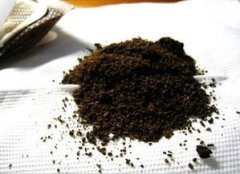Is white coffee white coffee? Coffee common sense
White coffee does not mean that the color of coffee is white, but refers to the adoption of high-quality and precious coffee beans, removing a large amount of caffeine after low-temperature (moderate to mild) roasting and special processing, and removing the bitter and sour taste produced by high-temperature carbon roasting. The bitter taste and caffeine content of the coffee are reduced to a minimum, without adding any additives to enhance the taste, the sweet and mellow aroma does not hurt the intestines and stomach, and the original color and flavor of the coffee are retained. The color is lighter and softer than ordinary coffee, and the taste is pure, so it is named white coffee.

White coffee is completely free of wheat grains, corn kernels and other impurities, generally does not contain sugar, low calorie, caffeine less than 10%, does not contain any additives, can be brewed directly, maintaining the pure flavor of natural coffee.
It is said that white coffee is a native and domestic product of Malaysia, which has a long history of more than half a century in Malaysia. Its history can be traced back to 1958. It is said that there was an old master who made coffee in a coffee shop for 30 years. One day he tried to use the method of going to Qicunqing to stir-fry coffee without adding gum, vegetable oil or any ingredients. Then mixed with skim evaporated cream to create another style of fragrant, slippery and delicious, the first generation of traditional white coffee.

Drinking white coffee is not dry and hot, its caffeine content is less than 10%, does not contain any additives; the absorption rate is high, and it does not have any adverse stimulation to the gastrointestinal tract. Thus overcome the disadvantages of traditional coffee, suffering from diabetes, heart disease, cholesterol disease, high blood pressure, obesity and other patients can drink.
White coffee dissolves quickly, mellow and delicious, and the taste remains the same after freezing or cooling; the entrance is smooth, pure, fragrant, sweet and not greasy, without a trace of bitterness, refreshing and comfortable, with both the flavor of western coffee and the delicacy of the east.
Important Notice :
前街咖啡 FrontStreet Coffee has moved to new addredd:
FrontStreet Coffee Address: 315,Donghua East Road,GuangZhou
Tel:020 38364473
- Prev

Is it a pity that the coffee grounds have been boiled and poured out? Teach you how to use the coffee grounds you've cooked.
Coffee drinkers often have to face a lot of dregs left after brewing coffee, so it's a pity to dump it. A recent article published by the Coffee knowledge Network in the United States advises everyone to reuse their resources so that coffee grounds can become a good helper in life. Coffee grounds mainly have the following functions: plant nutrients: because coffee grounds contain nutrients for plant growth, pour them into flowerpots.
- Next

Staying up late for coffee may be more sleepy. Coffee needs attention.
When staying up late, many people are used to drinking a cup of coffee to refresh themselves, but does this really work? Studies have shown that drinking a lot of coffee will accelerate the consumption of B vitamins, and people who lack B vitamins are more likely to get tired. In addition, caffeine has a diuretic effect. After drinking coffee, you will frequently go to the toilet, which will not only interrupt your work, but also cause water shortage in the human body.
Related
- Beginners will see the "Coffee pull flower" guide!
- What is the difference between ice blog purified milk and ordinary milk coffee?
- Why is the Philippines the largest producer of crops in Liberia?
- For coffee extraction, should the fine powder be retained?
- How does extracted espresso fill pressed powder? How much strength does it take to press the powder?
- How to make jasmine cold extract coffee? Is the jasmine + latte good?
- Will this little toy really make the coffee taste better? How does Lily Drip affect coffee extraction?
- Will the action of slapping the filter cup also affect coffee extraction?
- What's the difference between powder-to-water ratio and powder-to-liquid ratio?
- What is the Ethiopian local species? What does it have to do with Heirloom native species?

